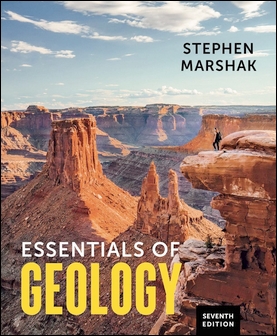書籍分類

Essentials of Geology 7/e
作者:Stephen Marshak
原價:NT$ 1,750
內容介紹 本書特色 目錄 作者介紹
- Description
Marshak geology meets active, virtual learning.
The gold standard text for helping students visualize and understand geologic processes makes hands-on and real-world exploration easier and more impactful than ever, in any course setting. New 3D specimen and digital elevation models, with corresponding Smartwork exercises, allow students to examine specimens and sites as if they were in the field or lab. And new highly visual “Practice What You Know” and “What Can You See?” activities at the end of each chapter and in Smartwork help students synthesize and apply important concepts like a geologist. Thoroughly updated with current events and essential data, the Seventh Edition also reveals the dynamism of geology and how it impacts our lives
分類位置:
理工 > 土木工程 > 地質學


